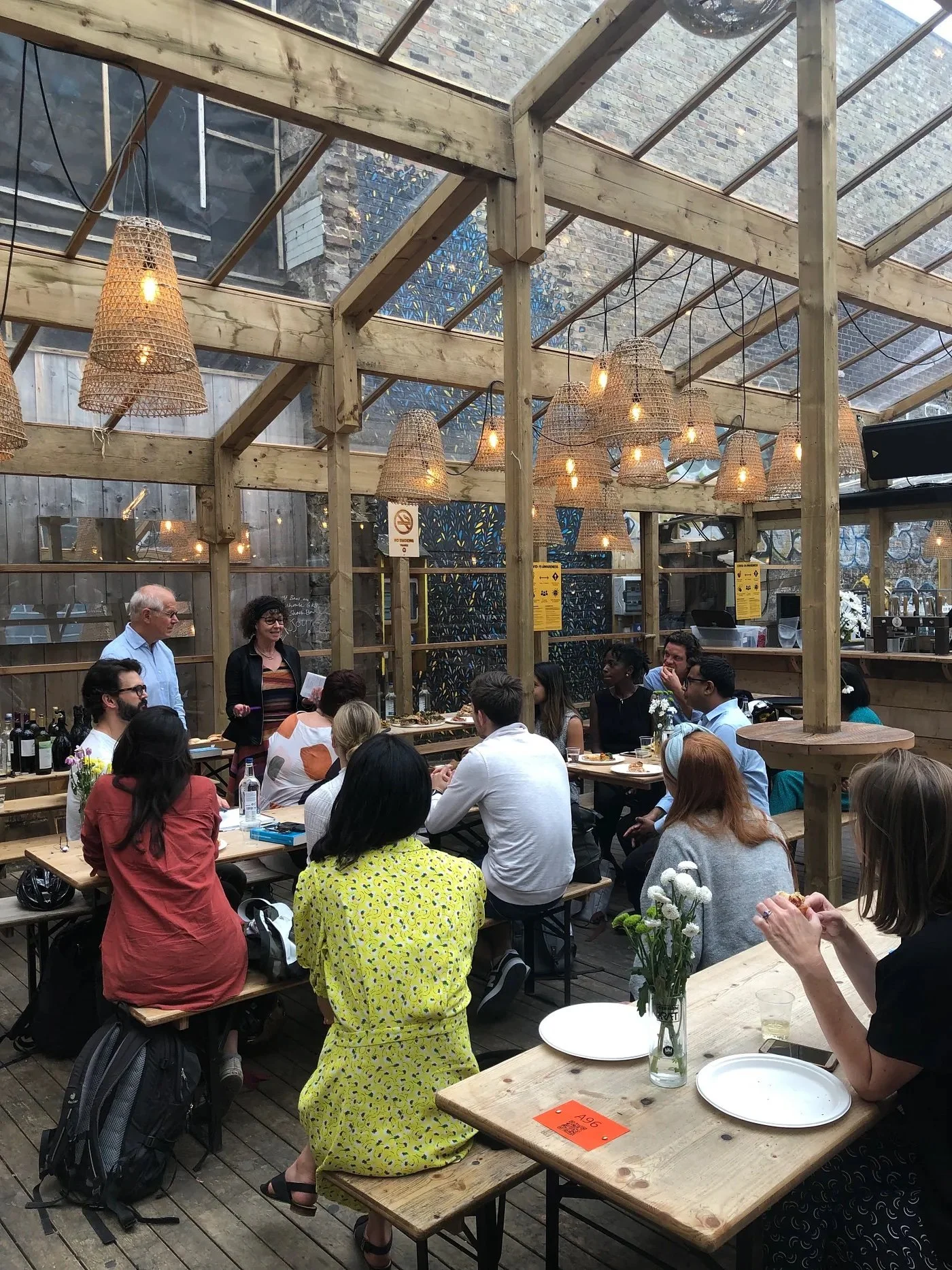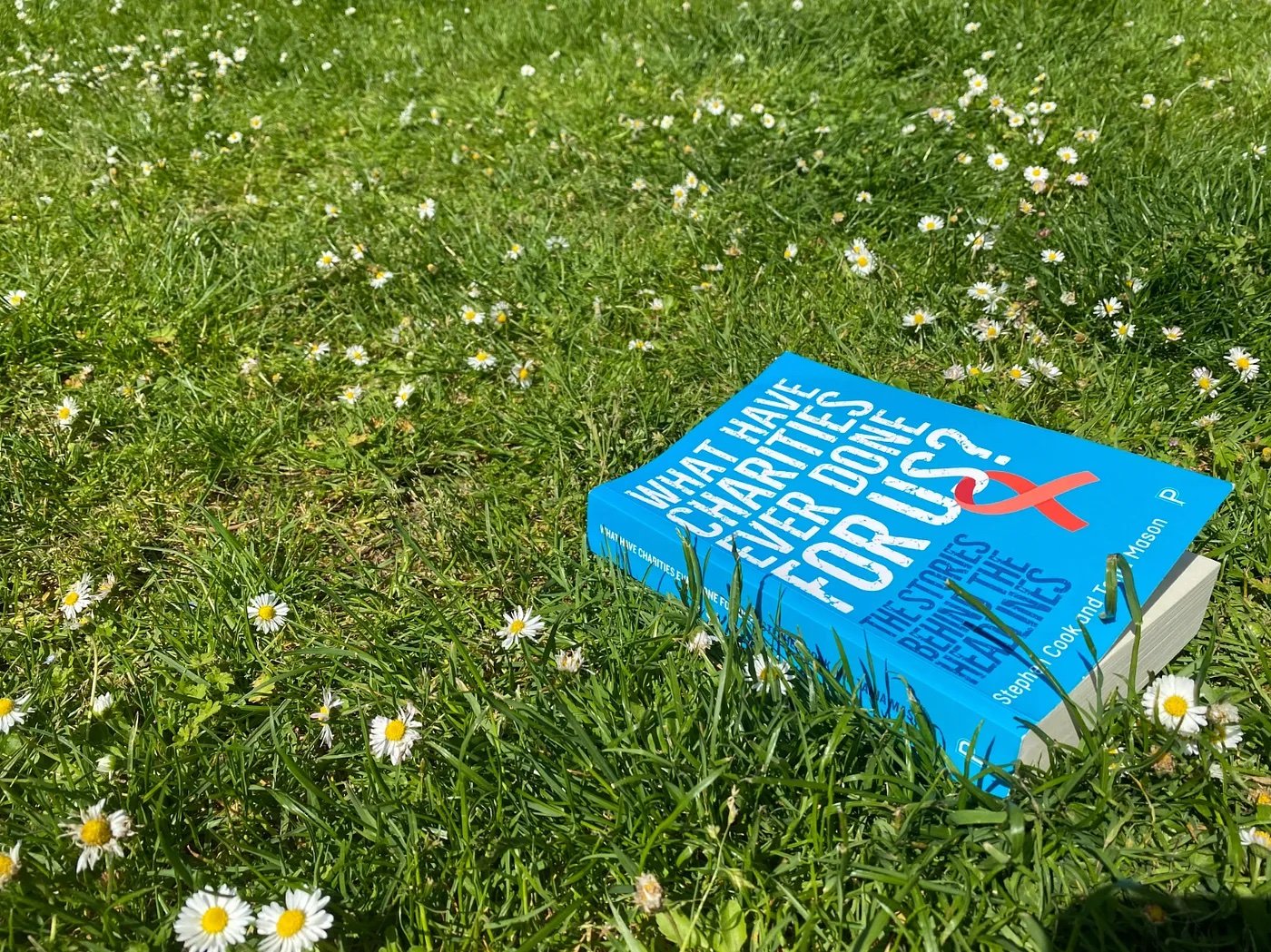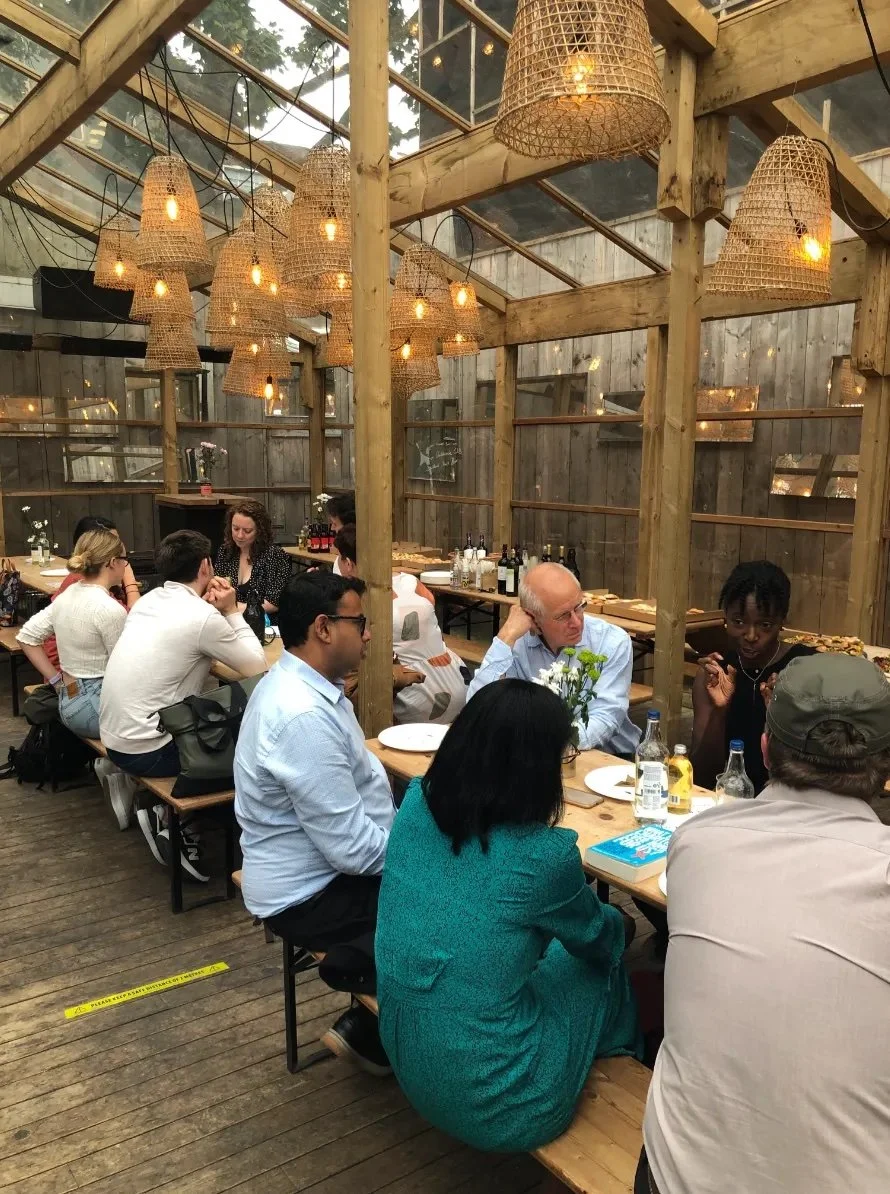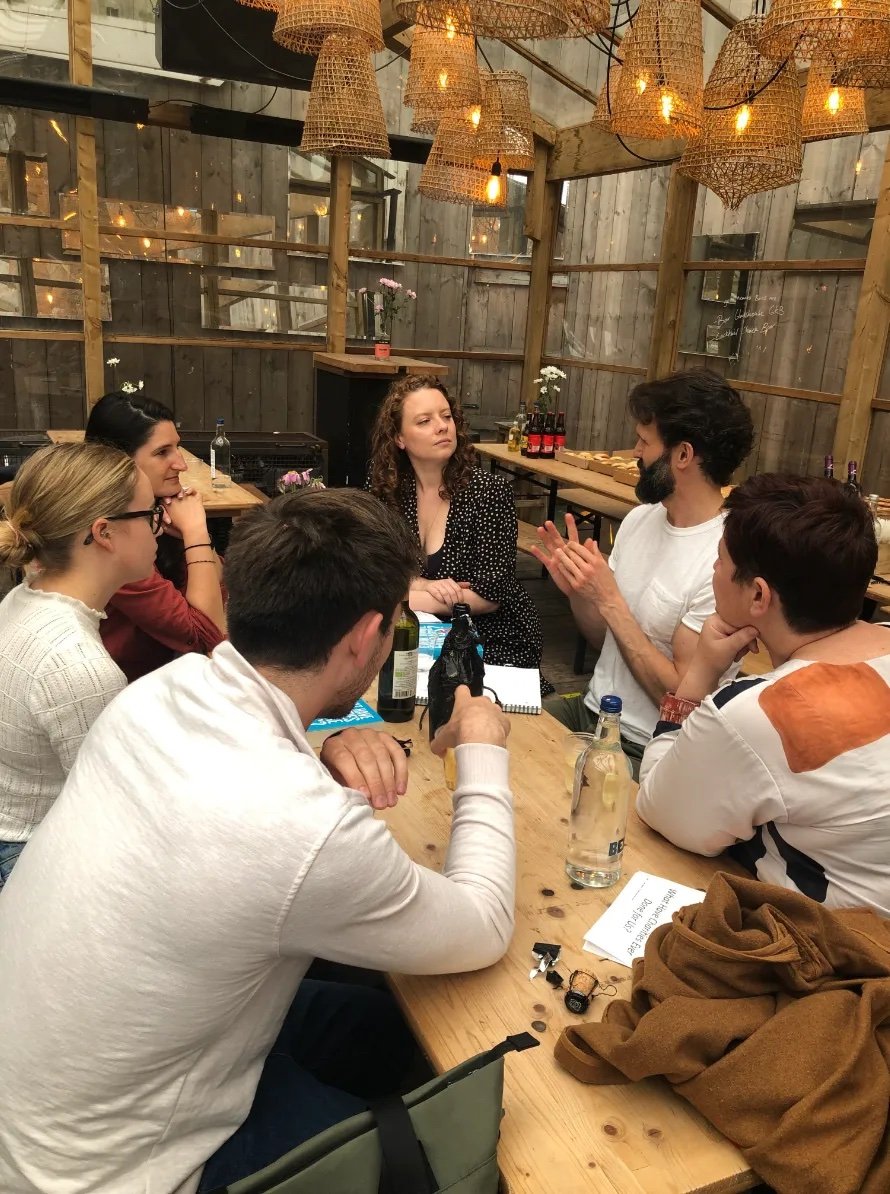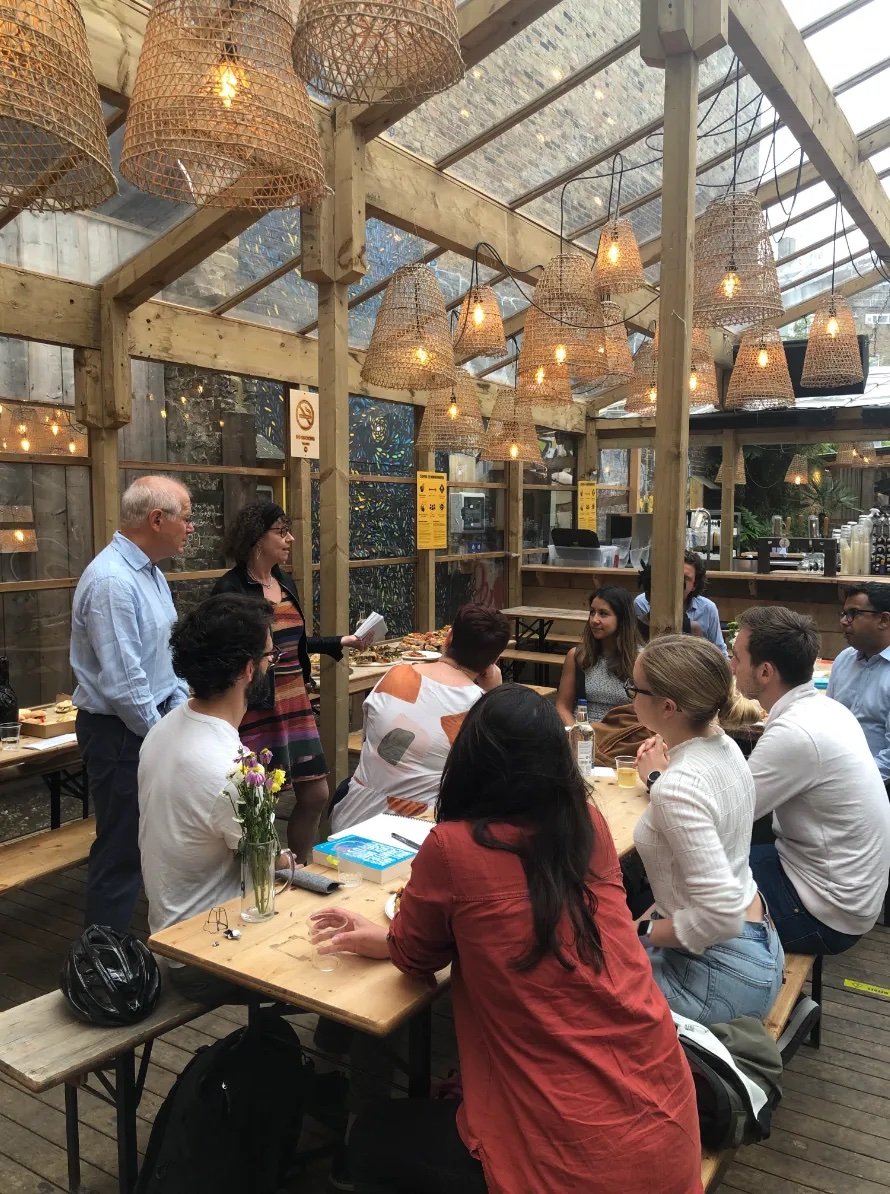I.G. Book Club: What Have Charities Ever Done for Us?
A couple of weeks ago, I.G. brought back its much-loved book club event for our first in-person get together in over a year. The highly-anticipated, cross-sectoral event took place in Mercato Metropolitano’s beautiful “indoor-outdoor” glasshouse and gave readers the chance to share thoughts on Tania Mason and Stephen Cook’s insightful and exploratory title What Have Charities Ever Done for Us?. In addition to great company, a wonderful backdrop, and plenty of delicious food and drink, the event featured exciting guest appearances from the authors themselves!
Tickets for the book club were limited due to Covid-19 restrictions, so we wanted to share some of the highlights for those of you who missed out! The subject matter of the book, combined with the lively and engaged nature of participants — all with impressive philanthropy, fundraising or corporate backgrounds — lent for particularly interesting conversation!
(Revisit our last book club event, all the way back in 2019!)
About the Book
For those yet to read it, What Have Charities Ever Done For Us? shifts focus back onto the positive contributions of the UK charity sector, amid a narrative of scandals and criticism which has overshadowed really amazing aspects of the sector’s work. Tania Mason and Stephen Cook ground the positive and optimistic stories they share in a range of data and insights to paint a more nuanced picture of an ecosystem worth celebrating.
Alongside opportunities to (finally!) catch up with peers face-to-face and make new acquaintances, the event was designed to provide a light-hearted yet though-provoking forum for discussion. It kicked off with an introduction to the book itself from Tania Mason and Stephen Cook, followed by a lively pub quiz on surprising facts from the book, a more in-depth group discussion, and a Q&A session with the authors. Below, we’ve summarised some of the key talking points that came from our discussions on the book.
N.B. any opinions shared here may not necessarily reflect those of all attendees, nor the I.G. Advisors team.
What are your perceptions of the word “charity”, and how do you think the different words used to describe non-profit organisations can play a role in how their work is perceived?
Attendees from across the sector agreed that there are negative connotations associated with the word “charity”, which conveys implications of power imbalances between organisations and the communities they seek to serve. Across the Atlantic, the terms “non-profit” or “not-for-profit” are often preferred over “charity”, but perhaps a more appropriate label in many instances would actually be “not-for-loss” — creating space to acknowledge that while organisations may not seek profit, they still need resources to stay afloat and expand their services.
As for other terms frequently used within the ecosystem, “voluntary sector” can evoke confusing and misleading notions of unpaid work, while “civil society” potentially goes beyond the charity sector to encompass something much larger. Ultimately, those involved in the charity and philanthropy sectors are aware that the very existence of so many terms can be confusing for the general public at large.
If you work in the charity sector, what is the thing you find hardest to explain to people who don’t? / If you don’t work in the charity sector, what is the thing you find hardest to understand from the outside?
Common yet challenging questions aimed at the non-profit sector often relate to staff salaries and, particularly, the size of CEO salaries, according to attendees. This is also linked to the perception among many outside the sector that charity work is a “side activity”, rather than a career in its own right. In fact, the expertise which can be built by working within the sector, and which is necessary to succeed within the sector, is often overlooked by those outside it.
The charity sector also struggles to manage other misconceptions, such as inaccuracies surrounding the best ways for the public to lend support and the most effective ways for charities to use money. Very often, the public sets higher standards and expectations for charities than they do organisations in other industries, which ignores the fact that mistakes will happen, and risks will need to be taken by charities, to innovate and make progress.
What was the most surprising thing you learned from reading the book?
What Have Charities Ever Done For Us? provides a great account of the history of the charity sector and includes illustrative case studies which underline just how surprisingly vast and complicated the ecosystem actually is. The text also paints charities in a more positive light, challenging some of the aforementioned misconceptions, and highlighting non-profits’ resilience and relevance. However, the range of organisations showcased in the text also serves as a reminder of the sector’s competitiveness, particularly when it comes to attracting funding. The governance chapter of the book generated particular interest within the industry, with many guests keen to probe the authors further on their recommendations for good governance.
In addition, the book puts an unexpected spotlight on the collective power of individuals to bring about change. It can be easy for actors within the ecosystem to forget or overlook just how much funding comes from individual, rather than institutional, donors and just how many instances exist of individual donors responding brilliantly to take action and support the sector’s work.
Having learned about the history and controversies, what would your ideal future ‘third sector’ look like in the UK?
Key stakeholders within the sector believe it needs to work more collaboratively, with the pandemic offering a great example of what can be achieved when different actors join forces. Certain smaller charities have struggled to stay afloat in the past, but increased grant-making to these organisations could be a win-win scenario, allowing for work with local insight while supporting struggling, yet key, actors.
Looking at the internal workings of charities, the sector would like to see a more transparent, global and diverse workplace. Charities should be more open to allowing staff to work from home, and based anywhere in the world, thereby spreading power and jobs more globally. Organisations should also make the most of technology for greater transparency and ensure a commitment to diversity at all levels of the organisation.
Thinking about your position in the non-profit or philanthropy ecosystem, what actions do you feel inspired to take after reading this book?
The book has encouraged many within the ecosystem to consider engaging in more volunteering and community building activities; the text contains countless encouraging and inspiring examples of the power of voluntary work and what can be achieved when communities come together. It has also inspired the ecosystem to think about how actors can collaborate to work towards improving the charity sector’s reputation, including its image in the media, where negative news stories tend to dominate discourse. Finally, organisations want to advertise and really put themselves out there to be as competitive as possible in the current funding landscape.
Final Thoughts
The authors really strived to make the book accessible both to actors within the charity and philanthropy ecosystems as well as the general public at large. The text has seen great success within the industry, but all attendees were keen to spread the word so it gains even greater traction outside!

